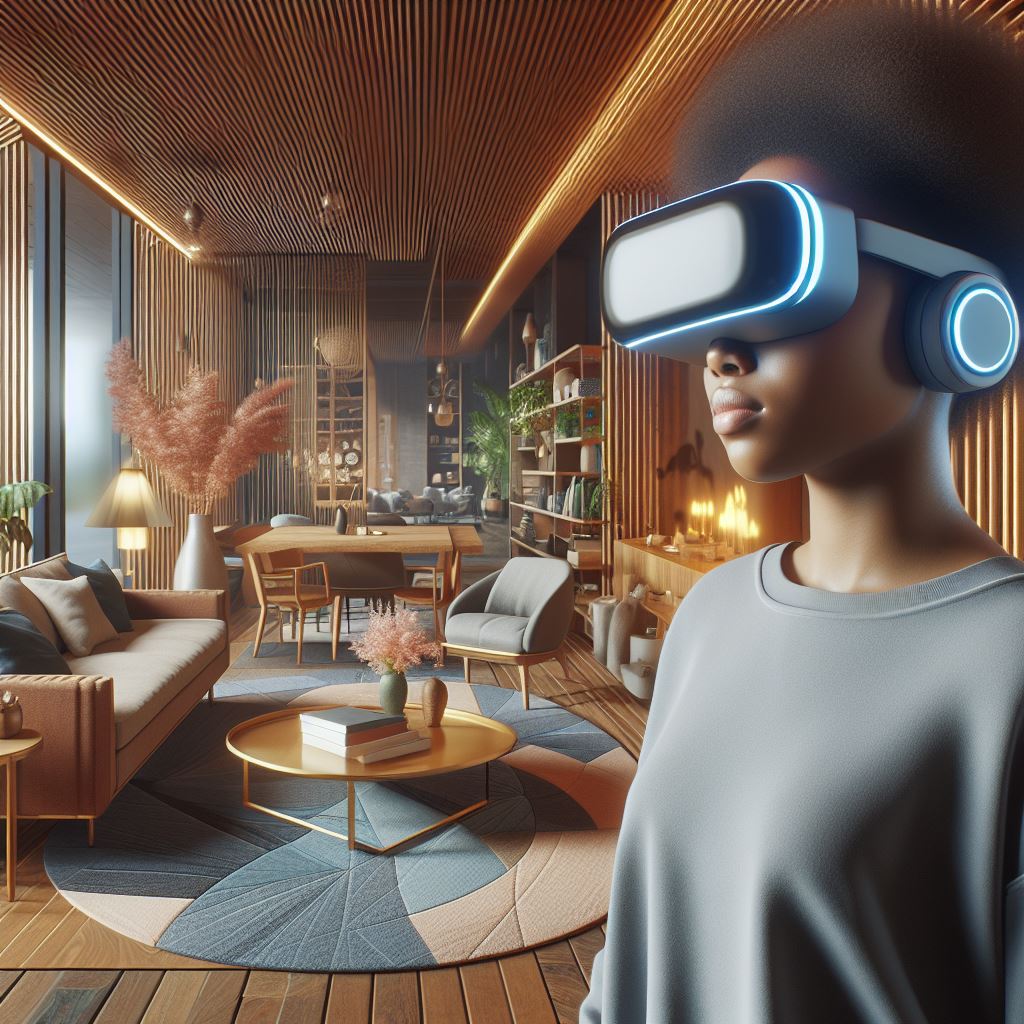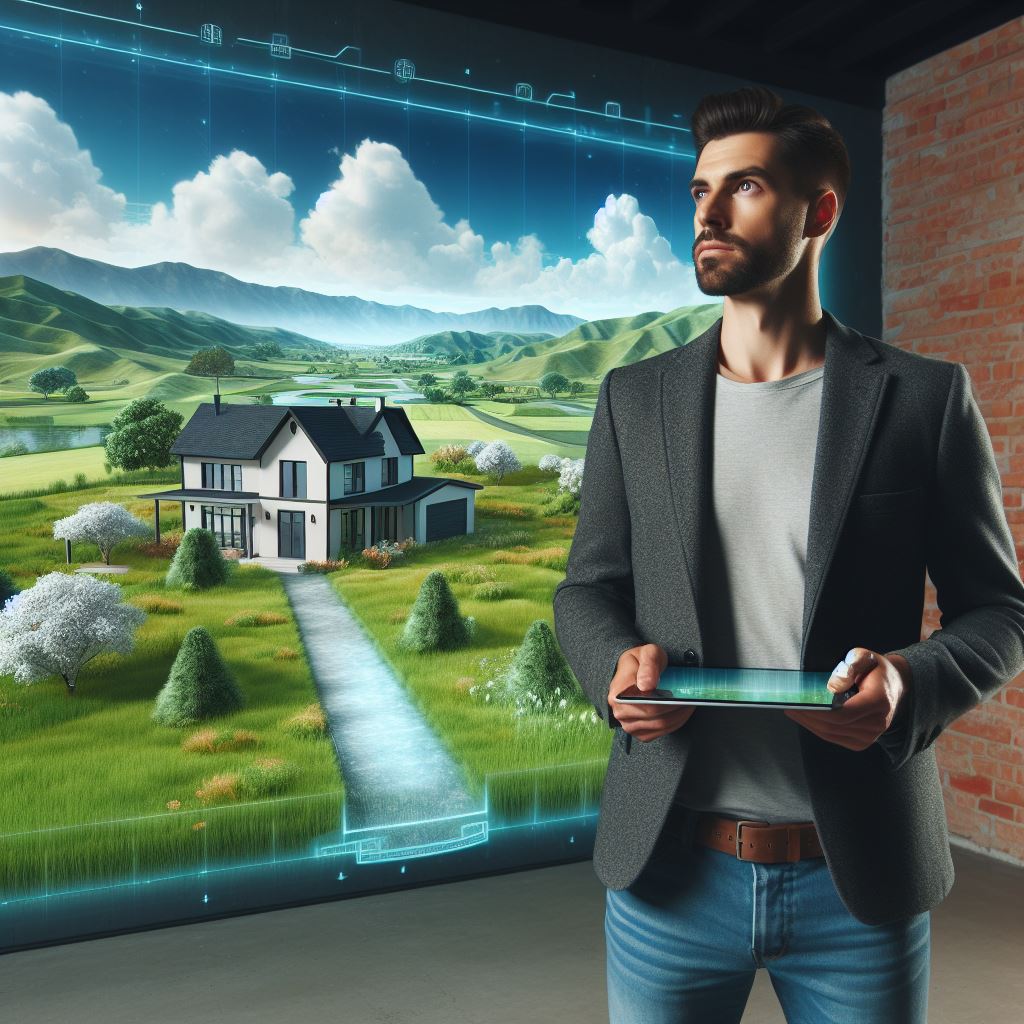Introduction
A virtual tour is a digital representation of a space that allows users to navigate and explore it. It provides a 360-degree view of the property.
Virtual tours have gained immense popularity in recent years, particularly in the real estate industry.
With technological advancements and increased access to the internet, more and more home buyers are turning to virtual tours as a convenient and efficient way to explore potential properties.
These virtual tours allow prospective buyers to virtually “walk through” a property and get a feel for its layout, size, and design, all from the comfort of their own homes.
This eliminates the need for physical visits to multiple properties, saving buyers valuable time and effort.
Furthermore, virtual tours provide a detailed visual representation of the property, giving buyers a better understanding of its features and amenities.
They can zoom in and out, explore different rooms, and even view the property from different angles, providing a comprehensive view of the space.
The increasing popularity of virtual tours can also be attributed to the COVID-19 pandemic, which has limited in-person interactions and accelerated the adoption of virtual technologies across various industries.
Overall, virtual tours have revolutionized the home buying process, offering a convenient and immersive experience for buyers while also providing sellers with a powerful marketing tool.
As technology continues to advance, virtual tours are likely to become even more prevalent in the future.
Benefits of Virtual Tours in Home Buying
Virtual tours have emerged as the new face of home buying, revolutionizing the real estate industry.
In recent years, advances in technology have made it possible for homebuyers to explore and evaluate properties without even stepping foot inside them.
This development has significantly benefited potential buyers, providing them with convenience, enhanced visualization, and an improved decision-making process.
Convenience for homebuyers
One of the primary reasons why virtual tours have gained popularity is the convenience they offer to homebuyers.
With virtual tours, individuals can view properties remotely from the comfort of their own homes.
There is no longer a need for physical visits, saving both time and effort.
Homebuyers can explore multiple properties without the hassle of scheduling appointments or traveling to various locations.
This level of convenience has made virtual tours an attractive option for those with busy lifestyles or those who live in different cities or countries.
Enhanced visualization
The enhanced visualization provided by virtual tours is another significant advantage for homebuyers.
These digital experiences offer detailed and interactive tours, allowing potential buyers to examine every aspect of the property.
From zooming in on specific features to virtually walking through rooms, virtual tours provide a comprehensive understanding of the space.
Additionally, the 360-degree views give homebuyers a realistic sense of the property’s layout and the flow between rooms, helping them visualize how they would live in the space.
Improved decision-making process
Furthermore, virtual tours facilitate the decision-making process for homebuyers.
By providing a better understanding of the property’s layout and design, virtual tours help buyers assess if the property meets their specific needs and preferences.
Homebuyers can easily compare multiple properties side by side, analyzing details and making informed choices.
This saves time and effort, as homebuyers can filter out properties that do not meet their requirements without physically visiting each one.
The ability to compare properties easily contributes to more efficient decision-making.
In essence, the benefits of virtual tours in home buying are numerous.
Homebuyers can enjoy the convenience of exploring properties remotely, saving time and effort.
The enhanced visualization provided by virtual tours allows for a comprehensive understanding of the property’s features and layout.
Moreover, the ability to compare multiple properties easily contributes to a more efficient and informed decision-making process.
As technology continues to advance, virtual tours will likely become an integral part of the home-buying experience for many individuals.
Read: Digital Leasing: The Future of Renting Homes
Types of Virtual Tours
In the digital age, virtual tours have become a game-changer in the real estate industry.
Homebuyers can now explore properties without leaving the comfort of their own homes. Let’s dive into the different types of virtual tours available.
3D Virtual Tours
One popular type is the 3D virtual tour. These tours utilize technology that creates a realistic three-dimensional representation of a property.
With 360-degree views and interactive features, potential buyers can virtually walk through a home, exploring each room as if they were physically there.
The level of detail and accuracy in these tours is impressive.
The advantages of 3D tours are numerous. First and foremost, they save homebuyers time and effort.
Instead of scheduling multiple in-person visits, they can narrow down their options by taking virtual tours.
This saves both buyers and sellers valuable time. Additionally, 3D tours provide a more immersive experience, allowing buyers to get a better sense of the layout and flow of a property.
Video Tours
Another type of virtual tour is the video tour. These tours provide an overview of a property through a recorded video.
They may include a guided tour by a real estate agent or highlight specific features and areas of the home.
Video tours offer a more dynamic and comprehensive view of the property compared to static photographs.
The benefits of video tours are evident. They allow homebuyers to get a feel for the property’s ambience and flow, as well as its potential.
It’s easier to visualize how a space can be customized or tailored to fit their needs.
Video tours are also valuable for out-of-town buyers who may not have the opportunity to visit the property in person.
Virtual Reality (VR) Tours
Virtual Reality (VR) tours take the virtual experience to the next level.
Using specialized headsets, buyers can immerse themselves in a lifelike, computer-generated environment.
VR technology creates a sense of presence, making buyers feel as if they are physically present in the property.
This level of realism allows for a more immersive and interactive experience.
The advantages of VR tours are unmatched. Buyers can explore every inch of a property, from every angle, and even interact with objects within the virtual environment.
This level of interaction and detail brings properties to life, giving buyers a true understanding of their potential.
VR also enables buyers to visualize renovations and design changes, helping them make more informed decisions.
Interactive Floor Plans
Interactive floor plans are another valuable tool in the world of virtual tours.
These plans allow buyers to explore the layout of a property in a visual and interactive way.
Features such as click-to-view photos, room measurements, and additional information provide a comprehensive understanding of the space.
The benefits of interactive floor plans are numerous. They help buyers gauge the size and flow of the property, allowing them to determine if it meets their needs.
Additionally, interactive floor plans offer a convenient way to compare different properties, making the decision-making process more efficient.
In fact, virtual tours have revolutionized the homebuying experience.
From 3D tours to video tours, virtual reality experiences, and interactive floor plans, technology has made it easier than ever for buyers to explore properties remotely.
These immersive and interactive tools provide invaluable insights and help buyers make more informed decisions, ultimately streamlining the homebuying process.
Read: Top 5 New Apps for Home Buyers in 2024

Virtual Tours in the Real Estate Market
Integration into property listings
The integration of virtual tours into property listings has become essential in the real estate market.
Real estate agents are now expanding their usage of virtual tours to provide homebuyers with a more immersive experience when searching for their dream homes.
Previously, virtual tours were considered a luxury and not a common practice in property listings.
However, as technology has advanced and become more accessible, virtual tours have gained popularity among both real estate agents and homebuyers.
Real estate agents recognize the value virtual tours bring to their listings.
By incorporating virtual tours, they can showcase the property in a more detailed and interactive manner.
Potential buyers can virtually explore each room, get a sense of the property’s layout, and visualize themselves living in the space.
The demand for virtual tours from homebuyers has also increased significantly.
In today’s fast-paced world, where time is a precious commodity, homebuyers are increasingly relying on virtual tours to narrow down their options.
Virtual tours allow them to view multiple properties from the comfort of their own homes, eliminating the need for numerous in-person visits.
Positive impact on property sales
Virtual tours have proven to have a positive impact on property sales.
Statistics have shown that properties with virtual tours receive higher engagement and conversion rates compared to those without.
Potential buyers spend more time exploring properties with virtual tours and are more likely to take the next steps towards purchasing.
Moreover, virtual tours have increased buyer interest and confidence.
They provide a more accurate representation of the property compared to static images or descriptions.
Buyers can get a comprehensive view of the property’s features, such as the layout, size, and condition, leading to a greater sense of trust and transparency.
Virtual tours have also helped sellers stand out in a competitive market.
With the increased demand from homebuyers for virtual tours, properties without this feature may be overlooked.
Sellers who incorporate virtual tours into their listings have a higher chance of attracting potential buyers and receiving offers.
Additionally, virtual tours can save time and resources for both real estate agents and homebuyers.
Agents can conduct virtual tours for multiple clients simultaneously, reaching a broader audience without the need for physical showings.
Homebuyers can efficiently narrow down their options and focus on properties that they are genuinely interested in, reducing the need for unnecessary visits.
In short, virtual tours have become a significant aspect of the real estate market.
Their integration into property listings has expanded, driven by the demand from homebuyers and the positive impact they have on property sales.
By providing an immersive and interactive experience, virtual tours enhance buyer engagement, increase confidence, and ultimately lead to more successful sales.
Read: Revamp Your Home Hunt with Top Online Platforms
How to Make the Most of Virtual Tours as a Homebuyer
Research and choose reputable virtual tour providers
When planning to use virtual tours for home buying, it is essential to first research and choose reputable virtual tour providers.
Look for providers that offer high-quality, interactive, and immersive virtual tours that can give you a realistic experience.
Check online reviews and ratings of the providers to ensure their reliability and customer satisfaction.
Communication with real estate agent
Effective communication with your real estate agent is crucial when utilizing virtual tours for home buying.
Discuss your preferences and requirements with your agent to help them understand your needs.
Requesting specific virtual tour features
If you have specific requirements for virtual tours, make sure to communicate them to your agent.
Ask for features like 360-degree views, floor plans, and the ability to zoom in on specific areas.
Ensure the virtual tour gives you a complete understanding of the property’s layout and features.
Asking follow-up questions
Virtual tours may not cover every aspect of a property, so it’s important to ask follow-up questions.
Inquire about any details you didn’t see in the virtual tour or need additional information about.
Clear communication with your agent will help you make informed decisions and avoid surprises later on.
Detailed examination of virtual tour content
When going through virtual tours, pay close attention to the content to make the most of the experience.
Paying attention to key details
Virtual tours provide a wealth of information about a home. Pay attention to key details like finishes, fixtures, and room sizes.
Zoom in on specific areas to get a better understanding of their condition and quality.
Note any special features or unique selling points showcased in the tour that may be of interest to you.
Noting potential discrepancies with reality
While virtual tours offer a realistic experience, there may be discrepancies with reality.
Take note of any differences between the virtual tour and the actual property during your examination.
If something seems different or inconsistent, seek clarification from your real estate agent.
By following these steps, you can maximize the use of virtual tours and make informed decisions as a homebuyer.
Remember to choose reputable providers, communicate effectively with your agent, and thoroughly examine the virtual tour content.
Virtual tours can revolutionize the home buying process, providing convenience and a realistic preview of properties.
Embrace this technology and enjoy a more efficient and effective home buying experience.
Read: Navigating Market Risks with Data Insights
Conclusion
A recap of the advantages of virtual tours in home buying would show that they provide convenience, accessibility, and cost-effectiveness.
Virtual tours have revolutionized the real estate industry, and their continued growth and adoption are inevitable.
With the advancements in technology and the increased demand for remote experiences, virtual tours are here to stay.
Homebuyers can now explore properties from the comfort of their own homes, saving time and effort.
Virtual tours also eliminate the need for physical visits, reducing the risk of health hazards and ensuring safety.
In addition, virtual tours allow potential buyers to visualize the property’s layout and its potential, making informed decisions.
Real estate agents and sellers can benefit from virtual tours by attracting more potential buyers and increasing their chances of closing a sale.
Overall, virtual tours have transformed the traditional home buying process by offering a new, interactive, and immersive experience.
As technology continues to evolve, virtual tours are likely to become even more realistic, engaging, and integral in the future of real estate.
Thus, it is clear that virtual tours are the new face of home buying and are set to revolutionize the industry further.




